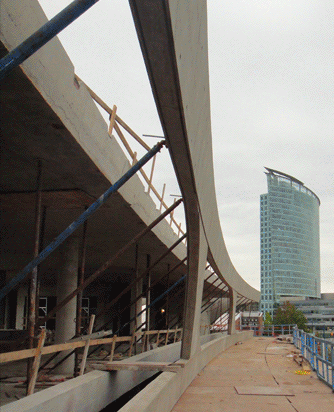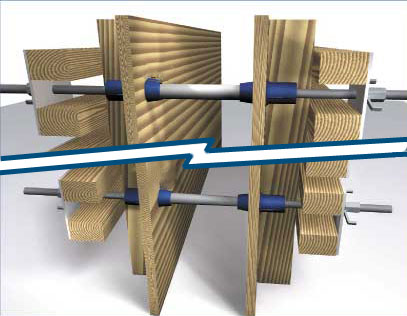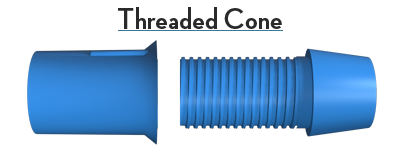Positive connection results in clean, consistent tie holes. |
 |
Unit can be assembled, installed, and removed in seconds by one man. |
|
One-time installation for threaded cone. |
- This system is superior for architectural concrete because it is has a positive connection
to the form liner (form face) itself and will not allow the cone to separate
from the liner during a pour. It does not allow the cement to bleed at the
surface of the wall resulting in clear, consistent tie holes.
- Cones remain attached to the form ready for the next cycle.
Method of Installation
To use the new threaded cone, drill a 1¼" hole into the form. Holes must be drilled perfectly straight. The threaded portion of the cone is designed for thin walled steel forms and up to 1½" (double ¾") plywood forms. Place the cone into the hole and hand-tighten the nut so that the cone comes flush to the plywood face. This eliminates any spalding when stripping the form. The cones remain on the forms, saving labour costs.
Taper Tie
- This system is designed for taper ties.
- It is the only system available that allows the contractor to execute architectural concrete using the speed of a taper tie system.

Dry Tie
- Liner cone can also be used with schedule 40 pipe if the contractor requires spacers in the tie system. Liner cone provides a shoulder that stops the spacer ½" short of the form liner. If liner cones are used on both sides of the wall the spacers are cut 1" shorter than the wall.
- With spacer pipe it is still possible to use the liner cone on both sides of the form. If this method is used the PVC pipe would be cut 1½" shorter than the wall width. i.e. Spacer for a 12" wall would be cut at 10½". With this method the contractor can eliminate the challenge of closing the forms as he won't have to align the spacer pipe to fit inside the liner cone on the button-up side.
- Note: ½" PVC ring needs to be cut and inserted into the liner cone onto the close-up form. This step is optional.

Alternative dry tie method 
- Insert Liner cone on stand-up form.
- Insert PVC pipe for spacer
- Insert convetional style cone onto the other end of the PVC pipe (dywidag cones can be used for this) -see Figure 1.
- This method requires the PVC pipe to be cut 1" shorter than full wall width.
![]()

Dry Tie Method
Cones are attached to form
face. Both sides architectural.

